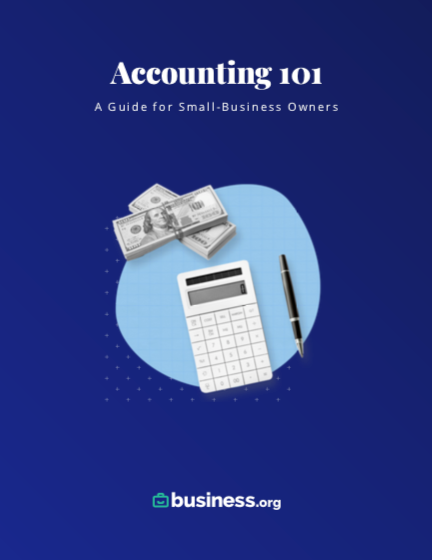We are committed to sharing unbiased reviews. Some of the links on our site are from our partners who compensate us. Read our editorial guidelines and advertising disclosure.
How to Make Adjusting Entries
If it’s been a while since your last Accounting 101 class, we won’t blame you for needing a little refresher on adjusting entries. Put simply, an adjusting entry updates an existing journal entry for a specific accounting period. When something changes, whether that be an asset depreciating, income received months after a transaction, or late payment to a client, your balance sheet will need an adjusting entry to show the change.
In this article, we’ll cover some accounting basics, the five types of adjusting entries, how they should be recorded in your financial statement (including examples), and why this knowledge is so important for your business.
Let’s get started.
Table of contents
By signing up I agree to the Terms of Use and Privacy Policy.
Accounting terms to know
To understand how to make adjusting entries, let’s first review some useful accounting terms that relate directly to this topic.
Journal entries
A journal entry is a record of a transaction within your company. In accrual-based accounting, journal entries are recorded when the transaction occurs—whether or not money has changed hands—in a general ledger (or general journal). From the general ledger, you can create other important financial statements like balance sheets, income statements, and profit and loss (P&L) statements.
Credit and debit
Just to refresh your memory—credit and debit have different meanings in accounting than you might be used to in the “real world.” In a journal entry, credit (CR) reflects decreasing assets or increasing liabilities, and debit (DR) reflects the opposite: increasing assets and decreasing liabilities.
Accrual system
There are two main types of accounting systems: cash and accrual. If your company uses accrual-based accounting (the more commonly used system), your general ledger will reflect all transactions at the time of occurrence and must follow the matching principle.
The matching principle
In accounting, the matching principle states that for every expense recorded, an equal revenue amount must be recorded in the same accounting period. For example, if you charge a client $5,000 for your services on February 5, this amount would be credited in revenue, and debited in accounts receivable on that day. Your journal entry reflecting the matching principle for this event would look like this:
When the bill is settled, you will need to make an adjusting entry.
How to make adjusting entries
Adjusting entries really aren’t as daunting as they sound. For the most part, they look and function just like a regular journal entry. The main difference is the credit and debit values and when the transaction is recorded.
Let’s say, from the example above, your client pays you on March 1, for the agreed amount (in February) of $5,000. This adjusting entry would swap your credit and debit values from the original journal entry, and look something like this:
However, adjusting entries looks different depending on the circumstance. This is why it’s crucial to understand the five types of entries before adding them to your journal.
The 5 types of adjusting entries
Now that we’ve covered the basics, let’s take a look at the five most common types of adjusting entries, and how each might apply to a company’s financial record.
Prepaid expense
Prepaid expenses are things you’ve paid for upfront but haven’t yet used in full, and are considered company assets. Common examples of prepaid expenses include insurance policies, rent, and necessary supplies or materials.
Because prepayments are considered assets, the initial journal entry of your purchase would debit the asset, and credit the amount paid. Often, prepaid expenses require an adjusting entry at the end of a financial year, and an additional one when the asset’s value has been fully incurred.
Let’s say your company purchased 12 months of rent upfront for $20,000 in October 2021. In December, you would make an adjusting entry reflecting the use of three months' rent like so:
On September 30, 2022 (when the 12 months have expired), you would create another adjusting entry reflecting the rest of your prepaid rent (nine months or $15,000).
Depreciation
Depreciation adjusting entries are used to spread out the cost of a fixed asset over time. Often, depreciation is recorded at the end of every year, until the estimated lifetime of the asset is complete.
For example, if your company purchased a delivery van at the beginning of 2021 for $40,000, and you expect to sell it for $5,000 after 10 years of use, you would want to spread out the remaining $35,000 over the next 10 years ($3,500 each year) using straight-line depreciation.
To account for depreciation, you debit the depreciation expense and credit the accumulated depreciation.
Each year you will use your depreciation adjusting entries to update your balance sheet on the remaining value of the asset as well.
Accrued expense
An accrued expense basically means that you owe somebody something. Whether your employees are waiting on a commission check, or you owe a client money for materials, these expenses need to be reflected in an adjusting entry.
For example, if you take out a loan from the bank on July 1 for $10,000 with 4% interest, you will need to make an adjusting entry at the end of the year reflecting the accrued expense of your interest so far.
Accrued revenue
Accrued revenue (or accrued income) adjusting entries reflect money that is owed to you. Let’s say your company makes a contract to provide three months of services to a client in January, at $500 per month. If the client agrees to pay you after the three months are up, you will make an adjusting entry reflecting your accrued revenue like so:
Unearned revenue
This category of adjusting entries is also known as unearned income, deferred revenue, or deferred income. Essentially, it refers to money you’ve been prepaid by a client before you’ve done the work or provided services. In the accrual system, this unearned income is seen as a liability and should be credited.
For instance, if a client pays you $500 for a machine rental upfront in August, but you won’t be delivering the machine until the following month, your adjusting journal entry would look like this:
Depending on your source, accounting professionals may recognize only four categories of adjusting entries, or up to seven. Additional types might include bad debts (or doubtful accounts), and other allowances.
Why adjusting entries are important
Aside from keeping everything neat and organized, adjusting entries is actually vital to your business if you want to keep an accurate record of your finances.
If your journal doesn’t accurately reflect your finances, other financial statements will be inaccurate as well—including balance sheets and income statements. These inaccuracies then snowball into your tax information, making it impossible to file correctly. And say goodbye to getting the most out of your tax write-offs!
In other words, accrual-based accounting just doesn’t function without adjusting entries.
Compare the year's best accounting software
Data as of 3/9/23. Offers and availability may vary by location and are subject to change.
*Only available for businesses with an annual revenue beneath $50K USD
**Current offer: 90% off for 3 mos. or 30-day free trial
†Current offer: 50% off for three months or 30-day free trial
‡Current offer: 75% off for 3 mos. Available for new customers only
Adjusting journal entry FAQ
What are the 5 types of adjusting entries?
The five most common types of adjusting entries are prepaid expenses, depreciation, accrued expenses, accrued income, and unearned income. Each type ensures accurate records are being kept of transactions in real-time.
How should adjusting entries be made?
Adjusting entries should be made any time an expense involves variability. This can include a payment that is delayed, prepaid expenses, growing interest, or when an asset’s value is stretched out over time.
What are the 7 types of adjusting entries?
Many experts list only four types of adjusting entries while others list five, six, or seven. These categories can include prepaid expenses, depreciation, accrued expenses, accrued income, unearned income, bad debts, and other allowances.
What goes in adjusting journal entries?
An adjusting journal entry includes credits and debits of various liabilities and assets. Following the matching principle, each adjusting entry should include an equal credit and debit amount.
The takeaway
If you learn nothing else from this article, remember: adjusting entries are essential to accrual-based accounting. Getting familiar with the five types of adjusting entries will help you keep an accurate record of your finances, create more accurate financial statements, file your taxes successfully, and benefit from write-offs.
Would you like to learn more about accounting for small businesses? Check out our Small Business Bookkeeping Basics article.
Related reading:
Disclaimer
At Business.org, our research is meant to offer general product and service recommendations. We don't guarantee that our suggestions will work best for each individual or business, so consider your unique needs when choosing products and services.






